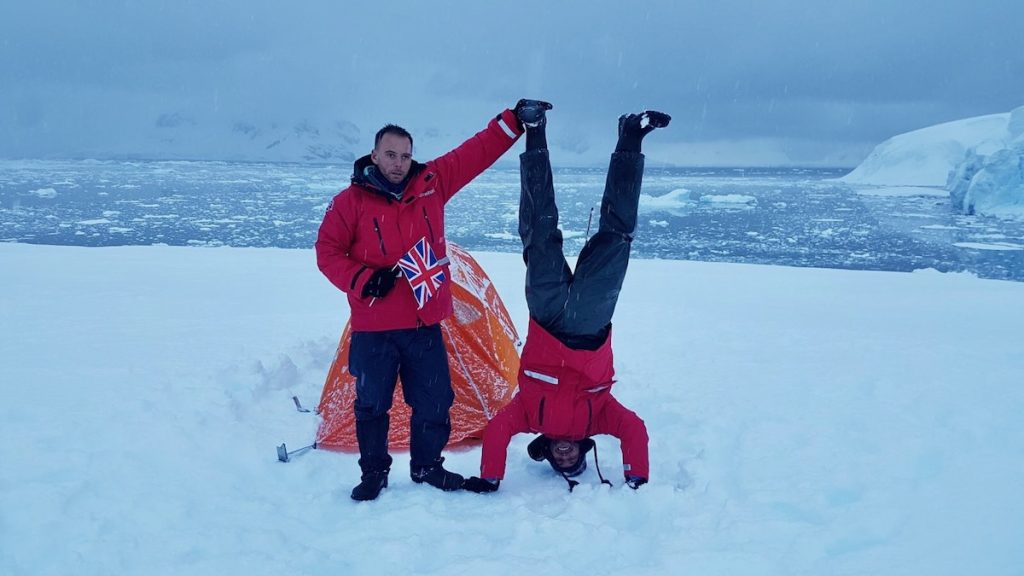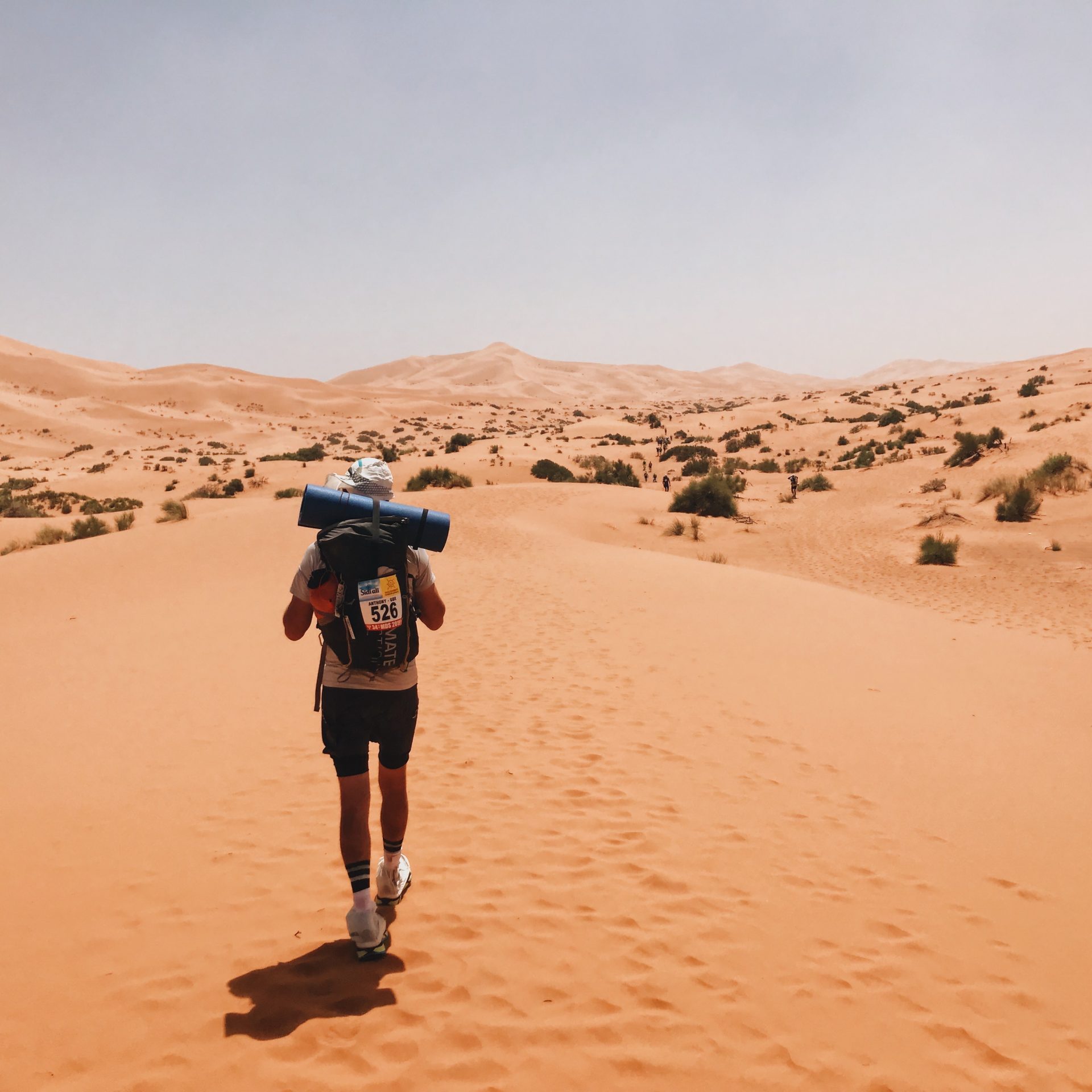I could barely sleep with excitement on the night before my first trip to Antarctica.
After starting my South American trip 18 months earlier and being lucky enough to visit Salar De Uyuni, Macchu Pichu and after an epic 3-week Patagonia itinerary (to name only a few highlights) I was at the âEnd of The World,â in UshuaiaâŠ
âŠWith a much lighter bank account and an overwhelming sense of enthusiasm to visit the final continent.
It still feels surreal to say that I travelled to Antarctica but Iâll try my best to answer any questions that I would have had before my trip.
What To Expect On Your First Trip To Antarctica
When planning a trip to Antarctica for the first time youâll more than likely have high expectations after hearing/reading about the relatively untouched beauty of the place.
Iâm happy to confirm that itâs not all hype, your journey to the ends of the Earth will not be met with the pain of anticlimactic travel memories. Wildlife lovers and those passionate about protecting ecosystems will be leaving Antarctica with smug smiles on their faces.
Itâs mainly all good, however, there are a lot of logistics you may not have considered or overlooked or some myths you may have fallen prey to so letâs unravel everything you need to know about your first trip to Antarctica.
Getting To Antarctica
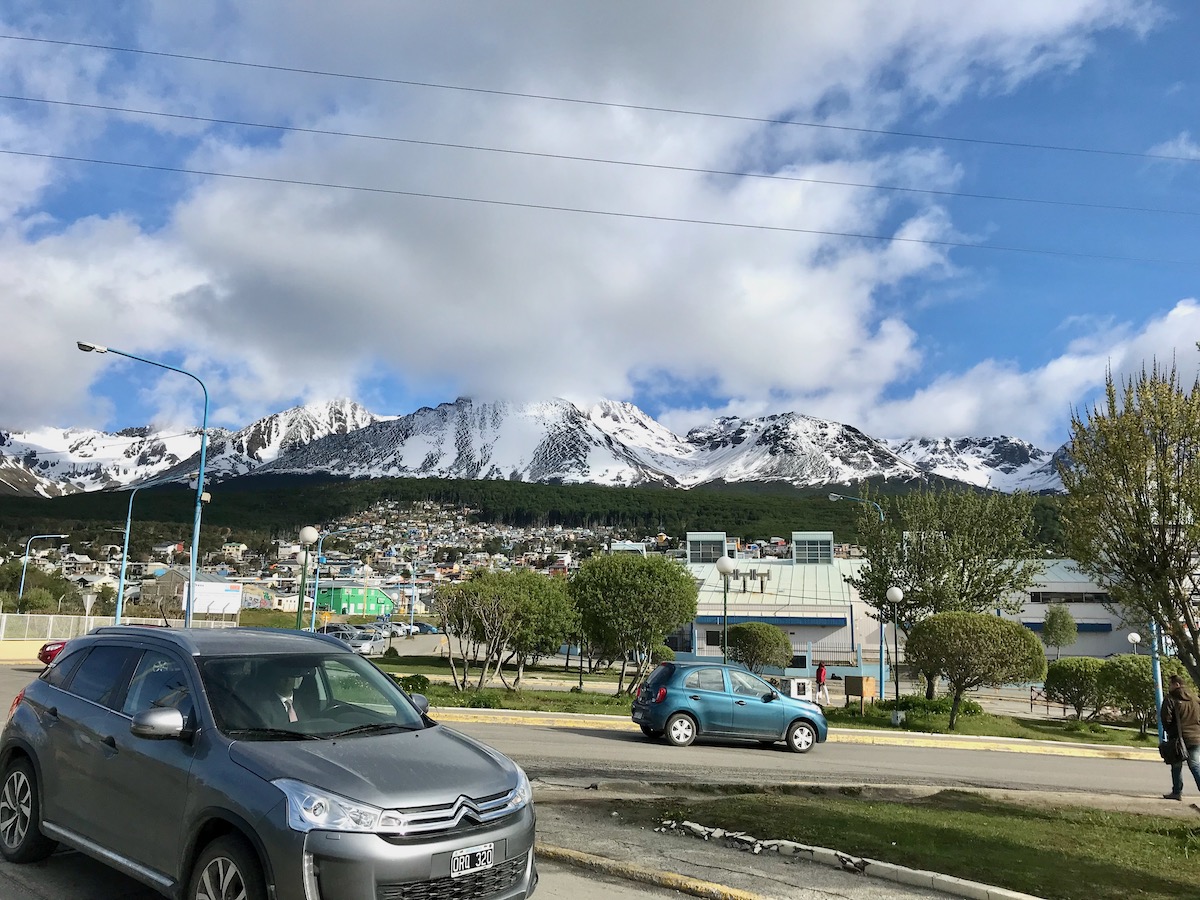
It should come as no surprise that getting to Antarctica is a bit of a mission and needs some strict planning. Unless you are a specialist in a scientific expedition or a foolhardy intrepid traveller battling through the conditions on a private yacht, your realistic options for getting to Antarctica are limited to the following:
- Ushuaia, Argentina. This is the most favoured option and is the one that I opted for. One of the popular things to do in Ushuaia is to wait around for a last-minute discounted deal to Antarctica. (I did not do this myself).
- Chile. Puntas Arenas. Some people that are short on time, high in income and those who want to avoid seasickness from the dreaded Drake Passage take a charter plane from Chile.
- Australia/New Zealand. Iâm sure the fact that I lumped both of these large countries in with each other will make some Kiwis and Aussies wince. We had a lot of them on our Antarctica trip who flew from their respective countries to Ushuaia. While itâs possible to get to Antarctica from NZ and Australia, it comes at an even bigger premium.
How Much Does A Trip To Antarctica Cost?
Depending on how fancy your cruise ship is and the length of time of your expedition, your trip to Antarctica should set you back somewhere between $10,000-30,000 USD.
As I touched upon earlier, some people like to chance their arm by staying in Ushuaia longer and grabbing a last-minute discount or cancellation.
Although I liked the thought of doing this I opted not to as my blog had started to reach peak income. So I thought Iâd treat myself with a nicer ship and also not have the anxiety of failing to secure my Antarctica spot after navigating the giant continent of South America for so long.
While spontaneous travel can be sexy, disappointment can be heartbreaking. I planned ahead and booked mine a year in advance with my biggest travel spend to date slapped on my American Express card; $15,081 for a 15-day Antarctica expedition via G Adventures.
What To Pack When Visiting Antarctica
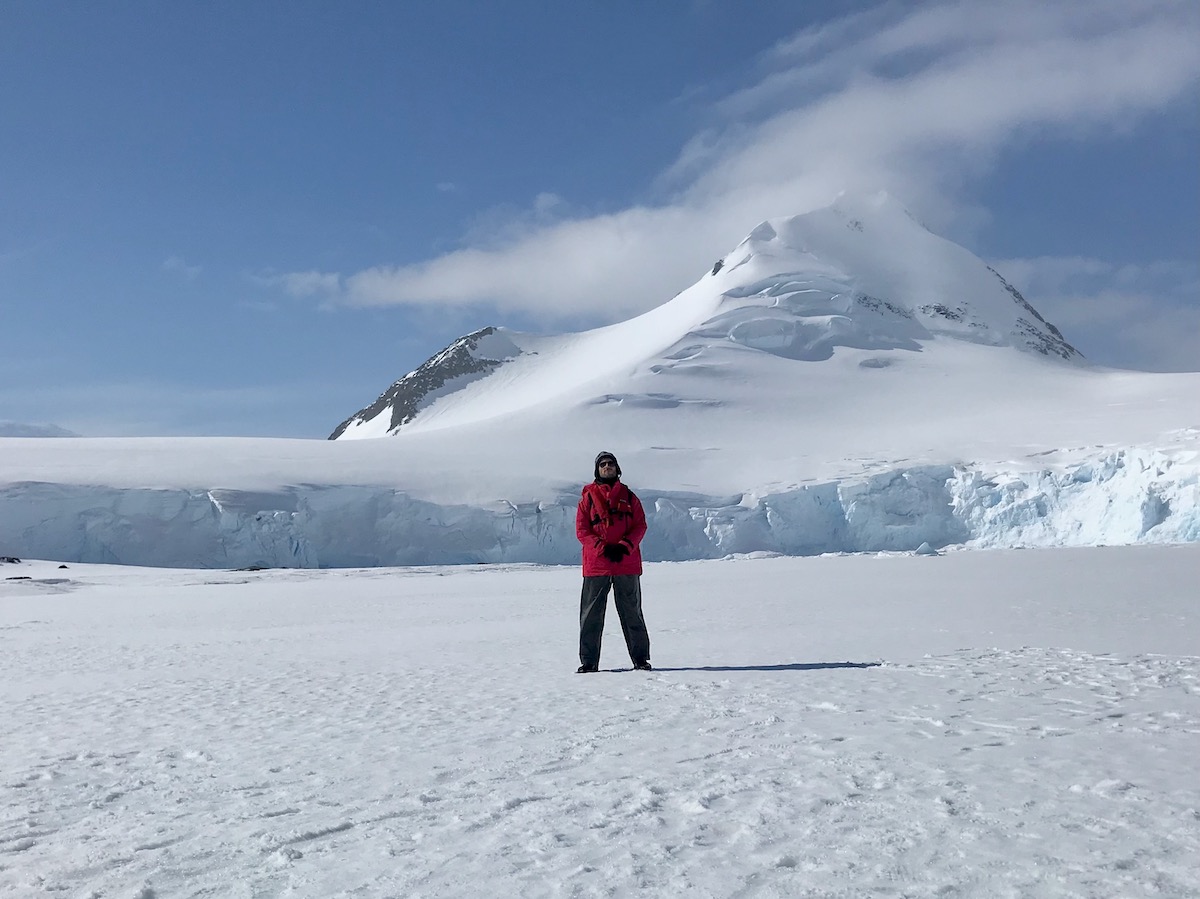
Despite the fact that Antarctica is a unique location and experience, a lot of the essential items fall under the âcommon senseâ category. Nevertheless, donât forget these items on your first trip to Antarctica.
I have put a star next to each item that G Adventures provided for me and I did not have to bring myself.
- Quality Parka.* A good quality, insulated, waterproof parka is crucial for protecting against Antarctica’s freezing temperatures.
- Boots.* Waterproof, insulated boots are a must for land excursions. As with parkas, some cruise companies provide these, so check before you pack your own.
- Binoculars. For you adorable dorks who want to see even more wildlife during your first trip to Antarctica. Respect.
- Warm Weather Accessories. Take the usual suspects, such as gloves, scarf, BUFF Headwear, warm socks and your favourite warm hat.
- Camera Equipment. I rocked it with my iPhone and GoPro. Remember to take your preferred equipment (with extra batteries) to capture your favourite moments.
- Entertainment. Most upscale cruise ships offer (choppy) Wi-Fi via a top-up card. I opted to stay offline during my 2 weeks and made sure I had my âmust-readâ books loaded up on my beloved Amazon Kindle.
- Sunglasses. Itâll still be bright and youâll need them sometimes more than others.
There Are Strict Rules When Travelling to Antarctica
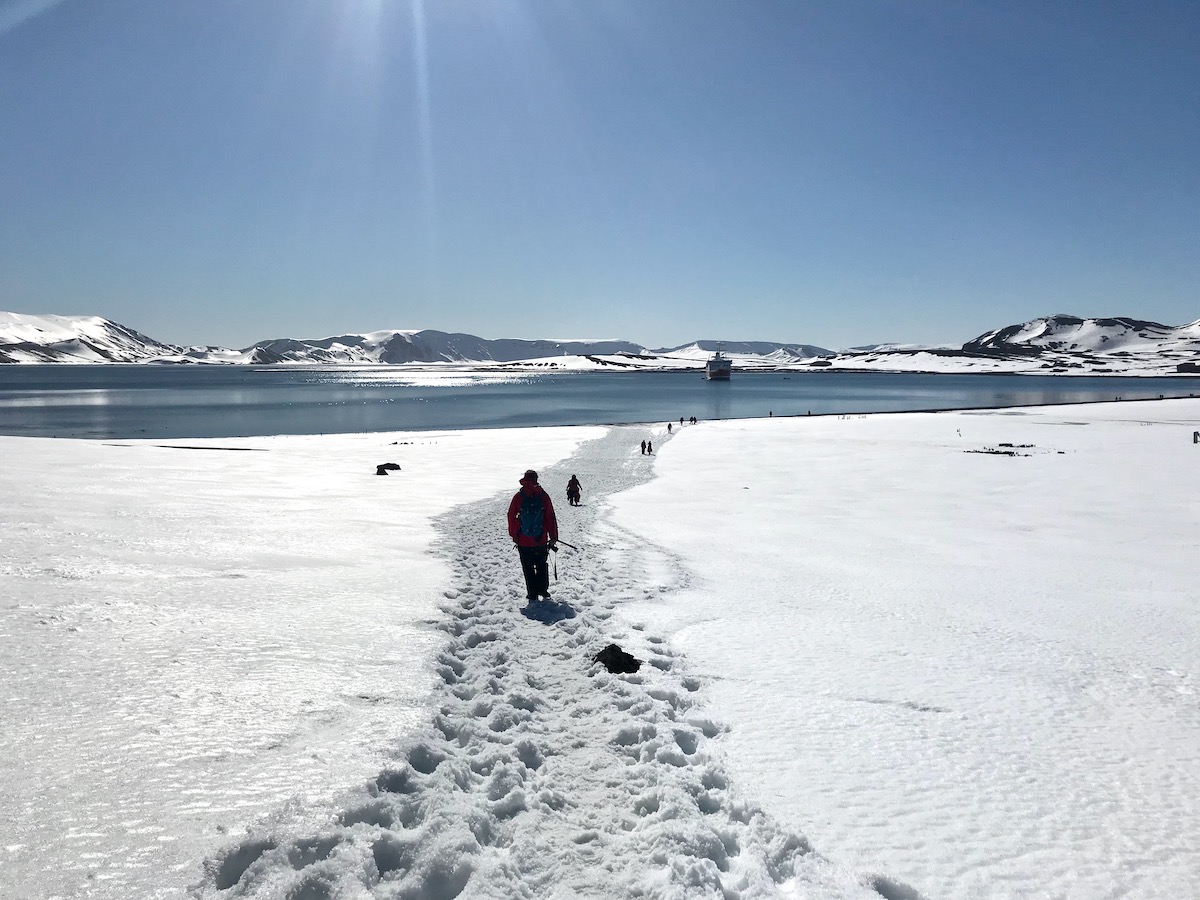
Antarctica is a unique and fragile ecosystem, home to countless species of wildlife and stunning landscapes that remain relatively untouched by human activity. Preserving the pristine is doable, but the following rules must be respected in order to minimise the impact of our trip to Antarctica.
- No Littering: Absolutely no littering is allowed. Everything you bring to Antarctica, you must also take away. This includes food scraps, wrappers, and even biodegradable items. The cold climate means that items take an exceptionally long time to break down, which can harm wildlife and spoil the intact environment.
- Don’t Disturb Wildlife: Always maintain a respectful distance from all wildlife. The Antarctic Treaty System suggests keeping at least 5 meters (about 15 feet) away from penguins and seals. Animals should never be touched or fed, as this can disrupt their natural behaviour and diet. Trust me, seals may be cute to look at but I saw one maul to death an unlucky penguin that got in his way on day 2!
- Stick to Designated Paths: When on land, always stay on the paths marked by your guide. Wandering off can damage delicate vegetation and disturb wildlife habitats. It can also be dangerous due to hidden crevasses and unstable ice.
- No Souvenirs: It might be tempting to take a small pebble or feather as a keepsake, but removing any natural material from Antarctica is strictly forbidden. This helps preserve the natural environment and prevents the accidental spread of non-native species. Our cruise conducted random pocket searches after each trip outside.
- Respect Protected Areas: Some areas in Antarctica are off-limits to tourists to protect certain wildlife habitats, research sites, or historical artefacts. Always respect these boundaries once they have been made aware to you.
- Prevent Biological Contamination: Before you set foot on the continent, your clothes, footwear, and any equipment must be thoroughly cleaned to prevent the introduction of non-native species. This includes seeds, soil, and other biological material that might be accidentally transported. Your ship will have a shower-like function to make this a seamless transition for you.
- Respect the Silence: Avoid making loud noises that could disturb wildlife or the peace and quiet that makes Antarctica so special.
- Drones are not allowed.
- No Smoking: Smoking is not allowed outside the ship due to the risk of fire and litter from cigarette butts.
The Motion Sickness Can Be Brutal!
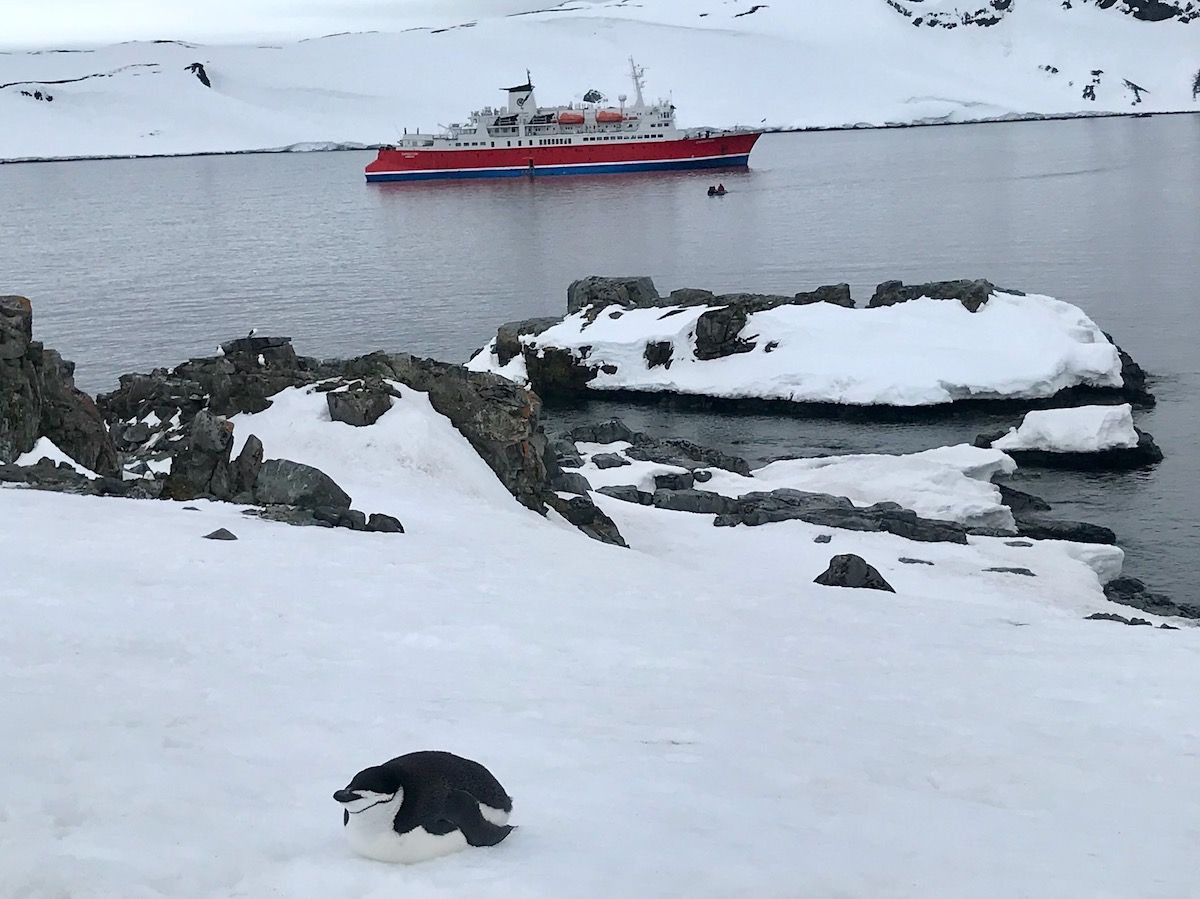
I have always been grateful for the fact I have no fear of flying and that I don’t feel seasick when travelling by water. However, the only time that I have ever taken a motion sickness pill (after begging for one) was when I experienced the infamous âDrake Shakeâ early into my first trip to Antarctica.
The Drake Passage is a body of water between the southern tip of South America and the Antarctic Peninsula, which is known for its rough seas. It’s often referred to as the “Drake Shake” when it’s stormy and the “Drake Lake” on calmer days.
People travelling through the Drake Passage may experience motion sickness caused by the movement of the ship. Symptoms can include dizziness, nausea, and sometimes vomiting. The severity of seasickness can vary greatly from person to person and can be influenced by the conditions of the sea at the time of travel. Some people might experience mild discomfort, while others may feel absolutely horrible.
Iâm not going to lie, it was a bit of a vomit party at one stage. All part of the adventure!
Usually, the crossing of the Drake Passage takes about 48 hours each way. So, if you’re prone to motion sickness, it’s important to be prepared for this part of the journey.
Here’s what you can do to deal with that dastardly Drake Shake:
- Medication: Over-the-counter medications like Dramamine or Bonine can help prevent seasickness. I took one and to my retrospective horror, found out that I had taken the very drug that had plagued me with terror when I lived in Medellin; Scopolamine! I was desperate though and it admittedly made me feel better in the moment.
- Sea Bands: These are wristbands that apply pressure to a certain point on your wrist and can help reduce feelings of nausea.
- Ginger: Some people find that ginger, whether in the form of candies, tablets, or tea, can help settle their stomach. I always travel with 100% ginger powdered tea.
- Choose a Stable Cabin Upon Booking: Cabins located in the middle of the ship and on lower decks tend to experience less motion.
- Look at the Horizon: Focusing on a fixed point in the distance can help your brain reconcile the motion you’re feeling with the motion you’re seeing.
Life on The Ship When Travelling To AntarcticaÂ

Life and travel is usually a âyou get what you pay forâ kind of deal and itâs certainly the case when finding the best facilities on a cruise to Antarctica.
I was planning a trip to the Maldives the following year so I had to pull the reigns somewhat on my level of luxury. Our cruise ship was a sensible step up from budget and the facilities on board included a sauna (which I used every day after going out in the cold) and a gym and places to hang out with people you connect with.
As I quickly found out during my 5 days in the Galapagos Islands, cruises are very clique and people tend to sort themselves out in their own little tribes.
Our cruise was also very boozy, we had a bar that we drank at every night; I would often step outside to bask in the amazing white, icy landscapes surrounding me. Just make sure you stay safe on your feet if you are to do the same!
One guy proposed to his girl out there. He was a bit of a dickhead in all honesty, but I must tip my hat to his smooth moves as that backdrop will not be forgotten in a hurry.
You will have a lot of downtime on the ship and average 2 trips per day outside (not including extra activities that you pay for), itâs a very stress-free environment and I have to say a sincere âcompliments to the chef,â a lovely Filipina lady who respected my hatred of onions and left them out of my (delicious) plant-based meals!
Wildlife You Will See in Antarctica

Antarctica is home to fascinating wildlife that has adapted to survive in the continent’s harsh climate. On a cruise expedition, you’ll have the opportunity to observe these creatures in their natural habitat, often from quite close range.
Expect to encounter these creatures on a regular basis:
- Penguins: Needing no introduction! The word âAntarcticaâ is pretty much synonymous with penguins. There are several species that call the continent home, including the Emperor, AdĂ©lie, Gentoo, Macaroni and Chinstrap penguins. You’ll be able to watch these charming and clumsy big birds on land and in the water, where their work rate is truly remarkable. I have dedicated a whole section to penguins in Antarctica below so you can plan which type of penguin youâd like to see as I take my penguin spotting very seriously!
- Seals: Several species of seals can be found in Antarctica, including the Weddell, Crabeater, Leopard, and Elephant seals. Each has its own unique characteristics and behaviours that you’ll be able to observe, from the Leopard seal’s hunting prowess to the Weddell seal’s lounging on the ice.
- Whales: Depending on the timing of your trip, you may have the chance to see different species of whales. Minke and Humpback whales are commonly seen during the Antarctic summer, feeding on the rich krill populations. If you’re lucky, you may also spot Orcas, Fin whales, and even the colossal Blue whale.
- Birds: Apart from penguins, Antarctica is a birder’s paradise. The South Polar Skua, Antarctic Petrels, and various species of albatross, including the Wandering Albatross with its impressive wingspan, can be spotted.
- Krill: While you may not be as excited to see krill, these tiny shrimp-like creatures are a crucial part of the Antarctic ecosystem, serving as the primary food source for many larger animals.
Remember, while observing these animals, it’s essential to respect them and their environment by keeping a safe distance and avoiding any behaviour that could disturb them.
The Different Types of Penguins You (Might) See in AntarcticaÂ
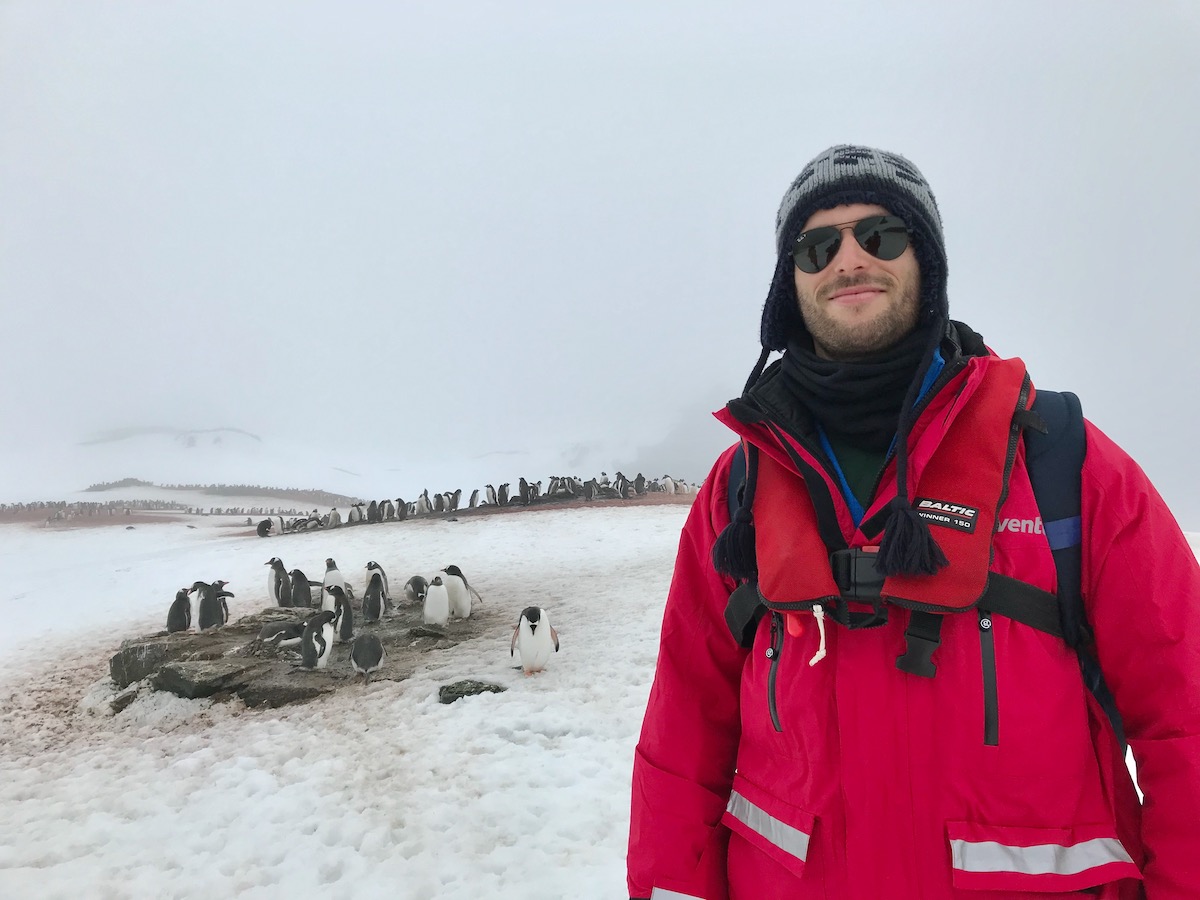
Letâs face it, the penguins steal the show in Antarctica before you even get there! While our black and white feathered friends are certainly the highlight in terms of wildlife, they are not all created equal and although there are several penguin species on earth, the chances are you will âonlyâ see 5 of them during your trip to Antarctica:
- Emperor Penguins
- Adélie Penguins
- Chinstrap Penguins
- Gentoo Penguins
- Macaroni Penguins
The Emperor penguin is the one you will definitely be the most aware of in your consciousness.
They are the iconic, much taller penguins with yellow faces (they also adorn the âPenguinâ chocolate bar in the UK, what a gig!)
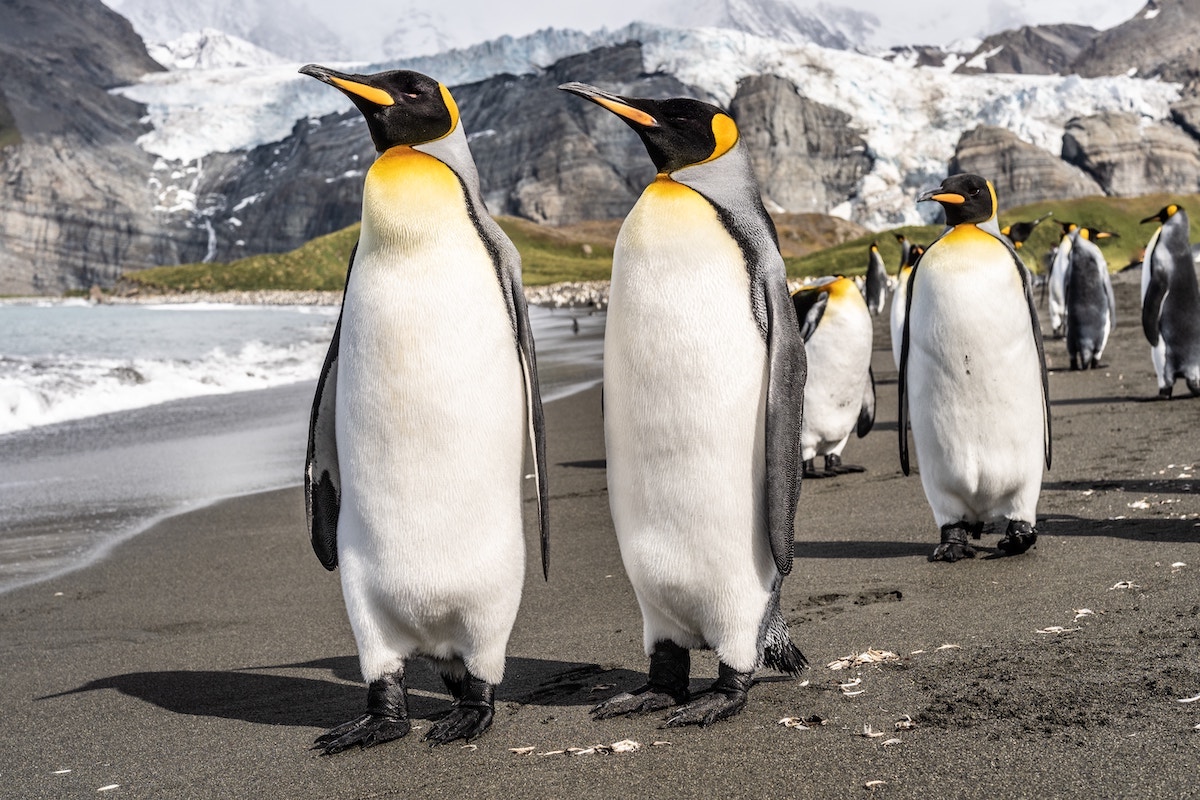
If you want to see these, the absolute créme-de-la-créme of penguins then your cruise will have to hit Snow Hill Island in October and November for your best chance. Snowy Hill Island is a very harsh climate, making this species of penguin even more enigmatic and well-respected.
You will see the other 4 causing all sorts of mischief around the region based on how north or south you are during your expedition. With that being said; how important is it for you to see a baby penguin?
I donât want to sound ungrateful, but I am a little gutted that I didnât get to see one as I arrived in mid-November when the penguins were nest-building. It would have been lovely to see a baby penguin, but it was also amazing to see the male penguins constantly working to build the nest with pebbles and the absolute hilarity of the female penguin often telling him the stone wasnât good enough before heâd waddle off down the hill to grab another for her and their future baby!
You canât have it all, eh?
Check out this table that I created so you can work out the best time to see the penguins in action based on your personal preferences:
| Penguin Species | Description | Where to Spot | Mating Season | Nest-Building | Baby Penguins |
|---|---|---|---|---|---|
| Emperor Penguins | Largest penguins with distinctive yellow patches on their necks | Sea ice around Antarctica, accessible colonies near Snow Hill Island | March-April | They incubate their eggs on their feet | Chicks seen from June to December, best in November |
| Adélie Penguins | Classic penguin coloration, black backs and white bellies, with a white ring surrounding the eye | Along the entire coast of the Antarctic continent, accessible colonies on the Antarctic Peninsula and nearby islands | Late October-Early November | November | Chicks usually hatch in late December and start to fledge in February |
| Chinstrap Penguins | Medium-sized penguins with a thin black band under their head | Shores of the Antarctic Peninsula and surrounding islands, including Deception Island and Half Moon Island | Late November-Early December | December | Chicks hatch in late December or early January and fledge in March |
| Gentoo Penguins | White stripe across the top of their head and bright orange-red bills | Antarctic Peninsula and sub-Antarctic islands | Late October-November | November | Chicks hatch in December and start to fledge in February |
| Macaroni Penguins | Vibrant yellow crest, a black face and underparts, and a thick reddish-brown bill | Sub-Antarctic islands like South Georgia | Early November | November | Chicks hatch in late December and fledge in April |
The Sun Is Visible 24 Hours a Day
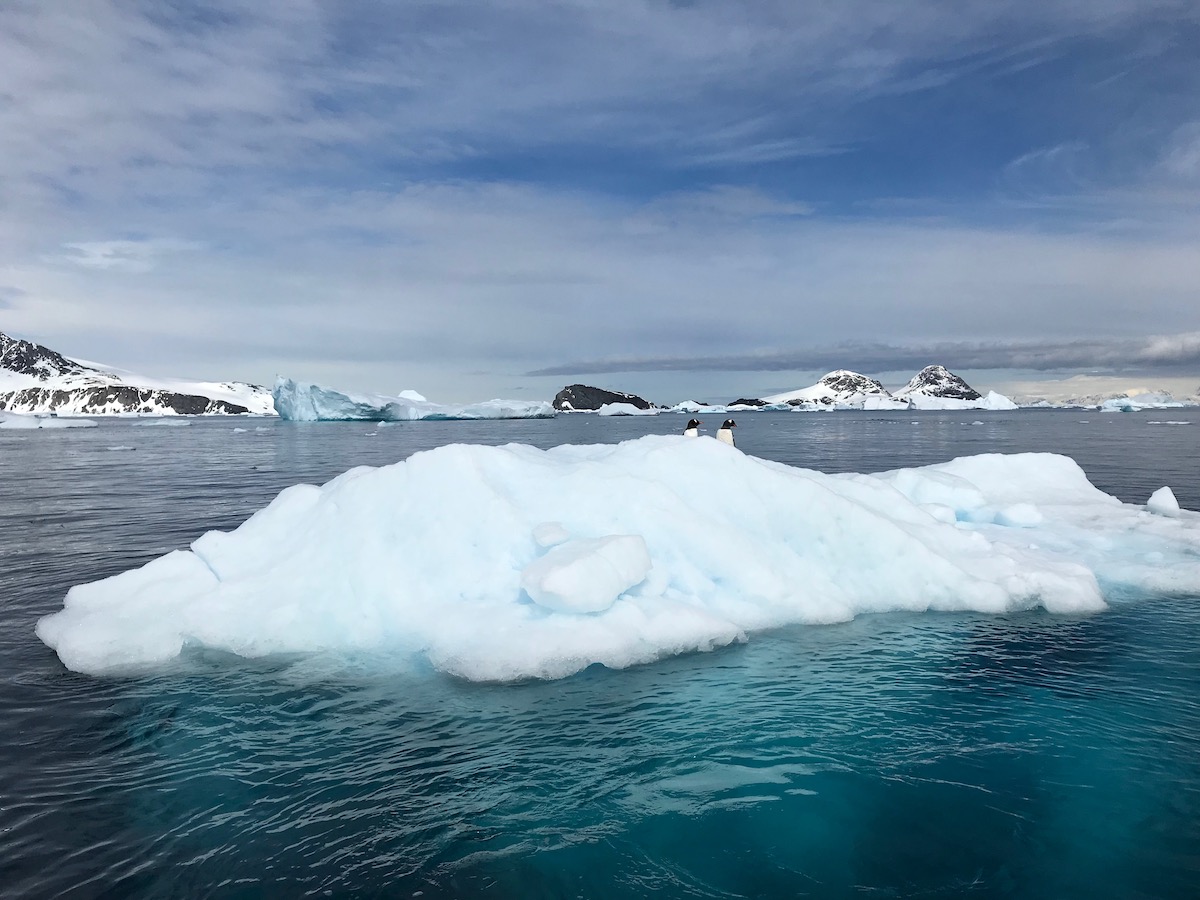
During the Antarctic summer, which generally spans from November to March and aligns with the tourist season, the sun is visible 24 hours a day.
This phenomenon, known as âthe midnight sun,â occurs because the Earth’s tilt causes the South Pole to be oriented towards the sun during the summer months.
While this 24-hour sunlight can be a cool experience, it’s important to remember to take care of your eyes when youâre looking at the horizon.
Additionally, maintaining a regular sleep schedule can be challenging due to the constant daylight, so consider bringing a comfortable sleep mask to block out the sun when you’re trying to sleep and if youâre a really high-maintenance sleeper like me then definitely take magnesium on a night time and Melatonin occasionally.
If you want to be even more hardcore do what I do and wear blue-light-friendly glasses in the evening when youâre trying to wind down.
Climate in AntarcticaÂ
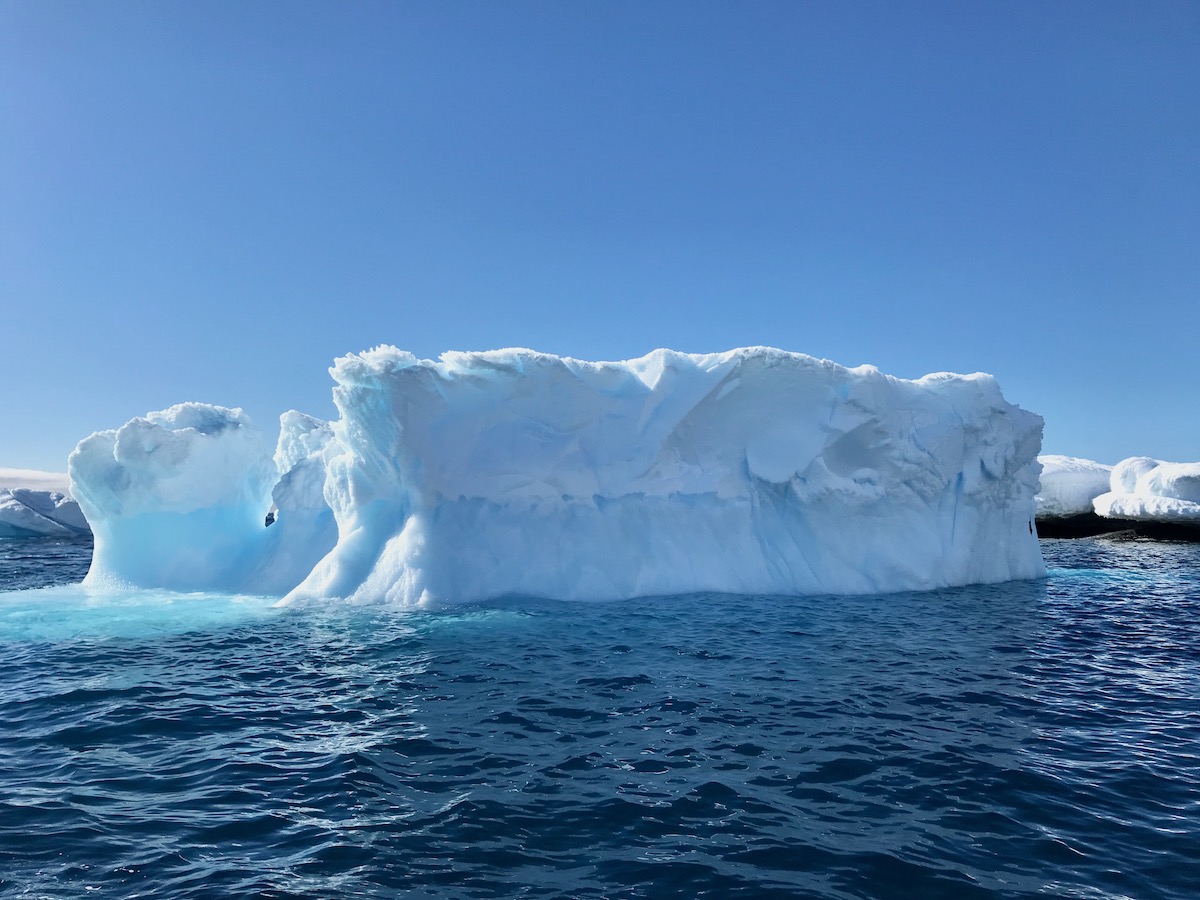
In the least breaking news ever; Antarctica is a cold place, with average temperatures on the coast, where most tourist activities occur, ranging from -2°C to 8°C (28°F to 46°F).
As you move further inland, temperatures drop significantly and can reach well below freezing. But letâs not get too carried away, you are not Sir Ranulph Fiennes battling your way through the wilderness on your own, you are on an expensive cruise ship with all the best gear⊠you will be fine and wonât get hypothermia in these conditions.
Itâs also incredibly windy most of the time. Again⊠no drama and nothing to worry about. Your expedition operator wants a stellar review from you and they will make sure you are safe as well as happy.
In some ways, I was less comfortable climbing Australiaâs tallest mountain in the winter than I was for most of the time in Antarctica as you are always coming straight back to a warm ship with a hot beverage.
Antarctica is also a land of ice and snow. Sea ice melts during these months, allowing ships to access the continent. First-time visitors should be prepared for landscapes dominated by icebergs, glaciers, and snow-covered terrain, which is absolutely incredible.
Things To Do on an Antarctica Cruise
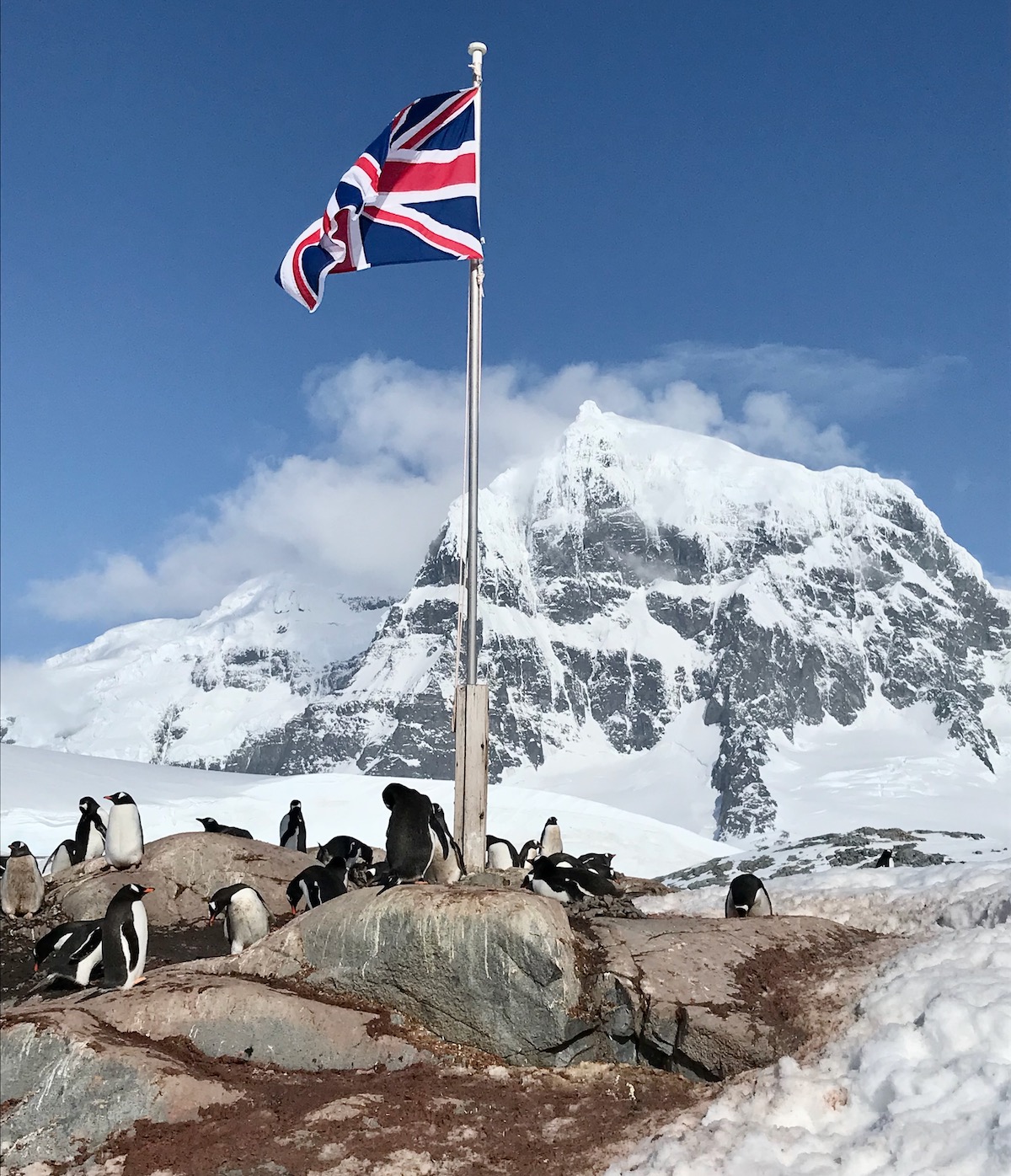
Donât worry, you wonât spend most of your downtime pining for penguins as youâre cornered on the ship by someone boring the hell out of you. You can customise your trip beforehand and keep busy with extra activities at some point during the tour for an extra cost per activity.
Bear in mind some are subject to delay or cancellation if the weather takes a bad turn and your guide feels it is unsafe to do so. Here are the popular things to do and a couple handpicked by myself:
- Camping under the stars. The chance is you will not sleep and you will stay up chatting with your tent mate (thatâs what I did) and my God, the stars and sky is unprecedentedly clear in Antarctica with zero light pollution.
- Kayaking. Itâs really not my cup of tea, but kayaking was very popular on the trip. Remember to confirm your name on the list early as numbers are limited due to safety.
- Visit The Science Research Centre. I donât usually do museums but this was a museum in Antarctica! How could I not?
- Whale Watching. I have been whale watching in New Zealand and I thought that was pretty impressive; in Antarctica humpbacks, orcas, minkes, blue, sei, sperm, fin and right whales swim pretty close to you and with the water being so clear you get an amazing view at these creatures.
- The Polar Plunge. Basically, get your swimsuit on (or birthday suit if you are brave) and throw yourself into the ruthless, freezing waters of Antarctica. This is a rite of passage in Antarctica and is usually done towards the final days of your trip as a big group.
- Drink vodka at the Worldâs most Southern bar. In 1996, Ukraine acquired the Vernadsky station for a nominal sum of just one British pound. (The cost of dismantling the base would have been significantly higher, making the purchase a logical choice.) The bar, now adorned with Cyrillic signs and various trinkets, transformed into a distinctively Ukrainian hub where one can mingle and enjoy drinks with researchers during their leisure hours.
- Send a loved one a postcard from Antarctica. The aptly named âPenguin Post Officeâ located at Port Lockroy offers those visiting Antarctica to send a special postcard back to the special people in their lives. Make sure they keep it for when you see them next, very cool thing to witness!
Final Thought About My First Trip To Antarctica
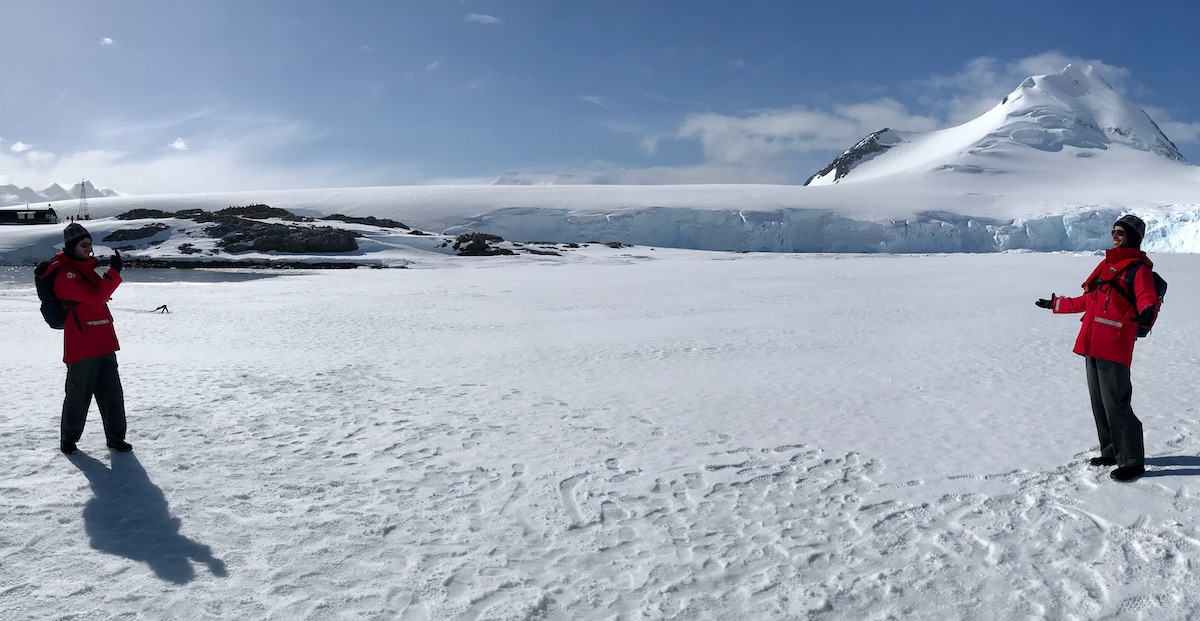
My first trip to Antarctica was honestly everything I wanted it to be⊠and it wonât be my last! The above âthings to doâ list that I listed are only the tip of the iceberg (pun intended) of what is available in terms of adventure travel on The White Continent.
One day I will go back and climb Antarcticaâs tallest mountain, although I have a few more to take down first – the most important one being Aconcagua.
Regardless of all that, the expedition was more than enough for me. I got to meet like-minded weirdos who also think itâs perfectly acceptable to plan a trip to Antarctica with their downtime, I saw a lot of penguins, survived the Drake Shake and lived to tell the tale⊠until next time!

